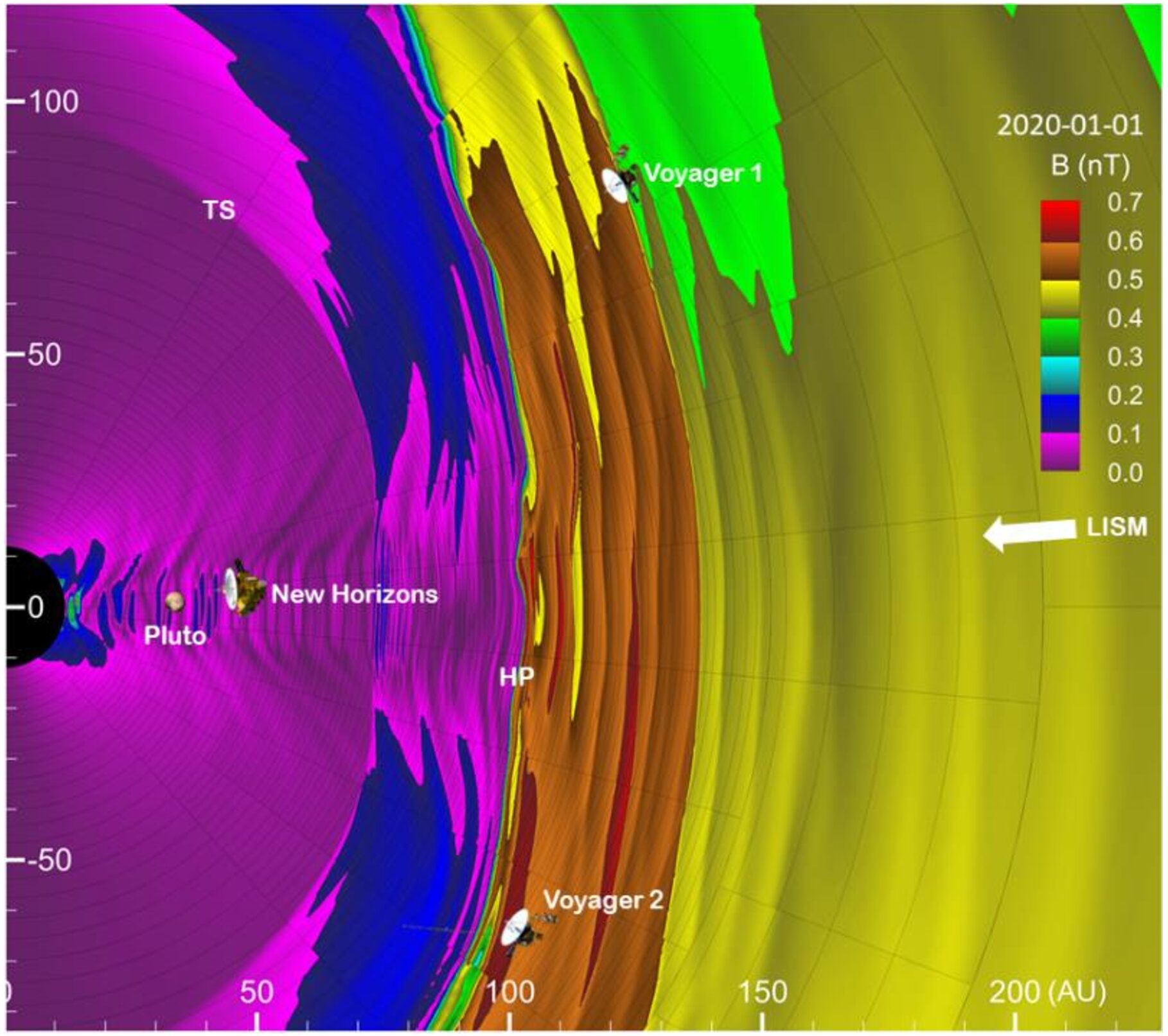Authors: Tae K. Kim (University of Alabama in Huntsville), Nikolai V. Pogorelov (University of Alabama in Huntsville), Eric J. Zirnstein (Princeton University)
As we near the solar cycle 25 maximum, the venerable Voyager 1 and 2 spacecraft continue probing the very local interstellar medium (VLISM) at 167 and 140 au from the Sun, respectively, followed by the New Horizons (NH) spacecraft at 62 au in the outer heliosphere. The Interstellar Boundary Explorer mission, to be succeeded by the upcoming Interstellar Mapping and Acceleration Probe mission, provide remote observations of the outer heliosphere and the VLISM from the Earth’s orbit by measuring the energetic neutral atom emissions to deepen our understanding of the distant regions shaped largely by the perpetual interaction between the solar wind and the interstellar medium. Numerical modeling can be extremely helpful for interpretation of remote and in situ observations that are widely separated by space and time. Using data-driven, data-constrained models of the Multi-Scale Fluid-Kinetic Simulation Suite, we simulate the evolution of the 3D global heliosphere and discuss the possible origin of the shocks and pressure fronts encountered (and to be encountered) by Voyager 1 in the VLISM, as well as NH’s proximity to the heliospheric termination shock. We also simulate the evolution of interstellar pickup ions throughout the heliosphere and compare with NH data out to 60 au.


